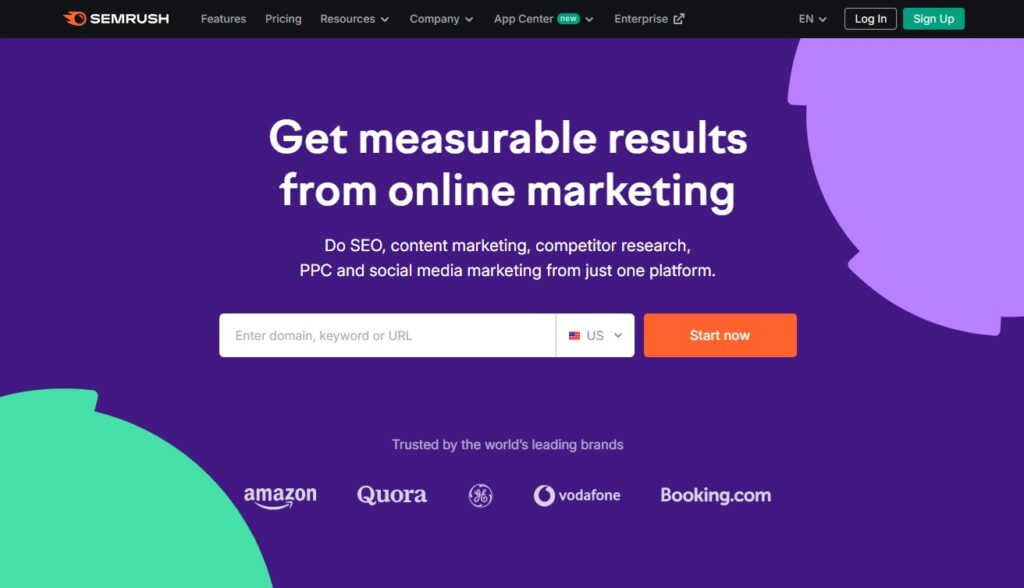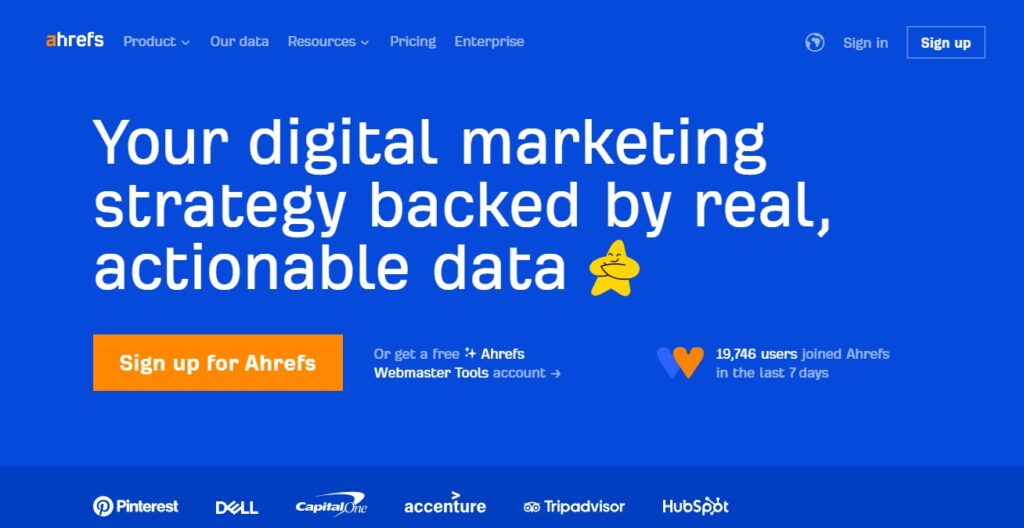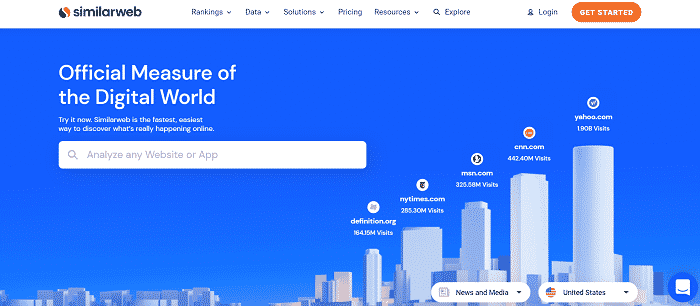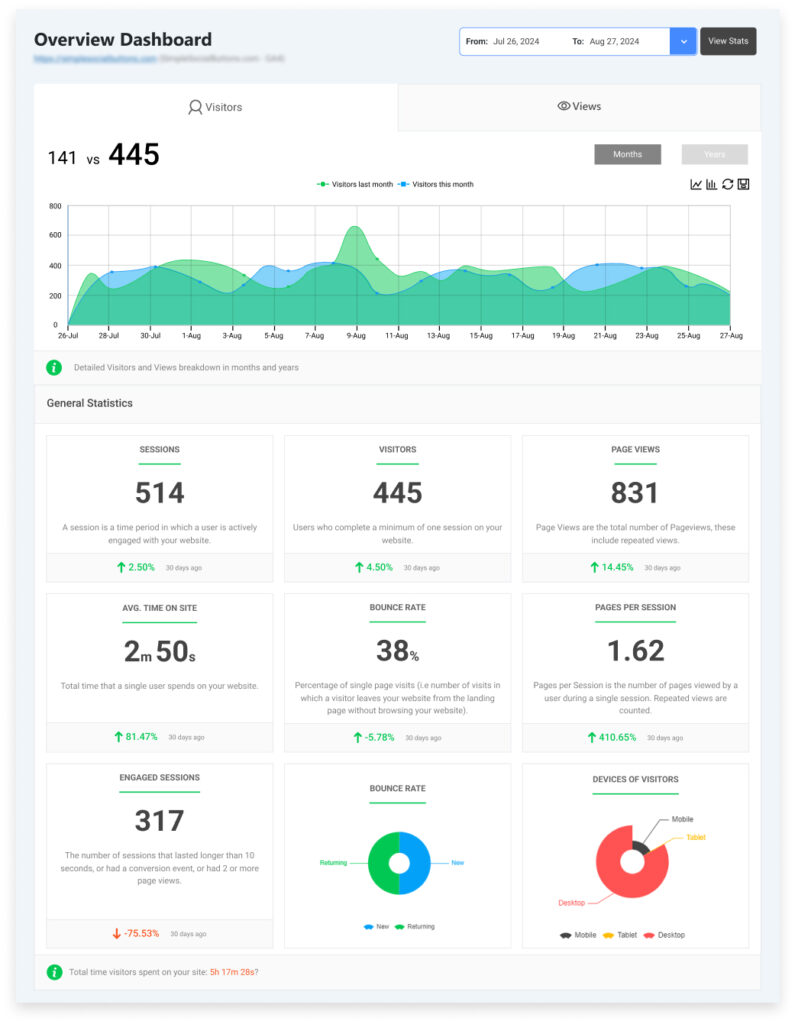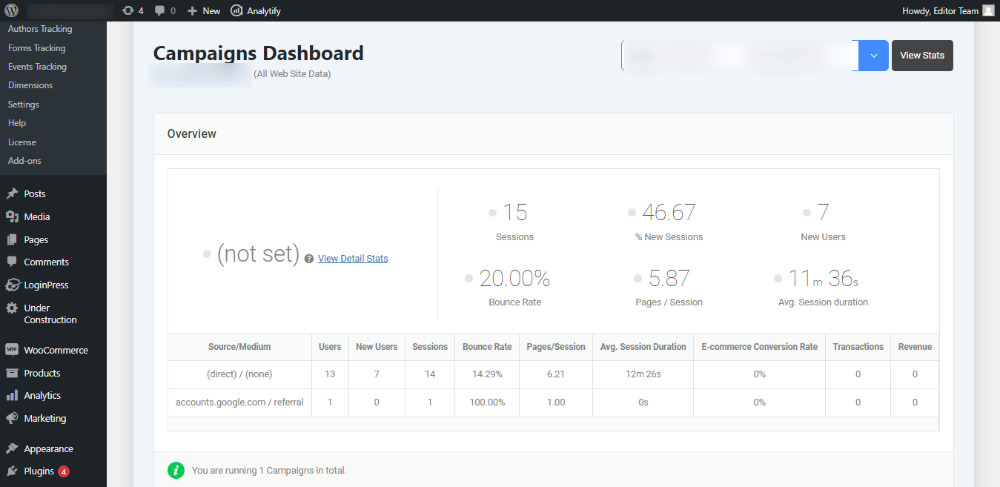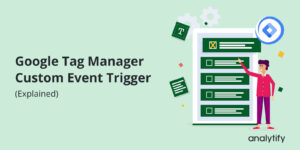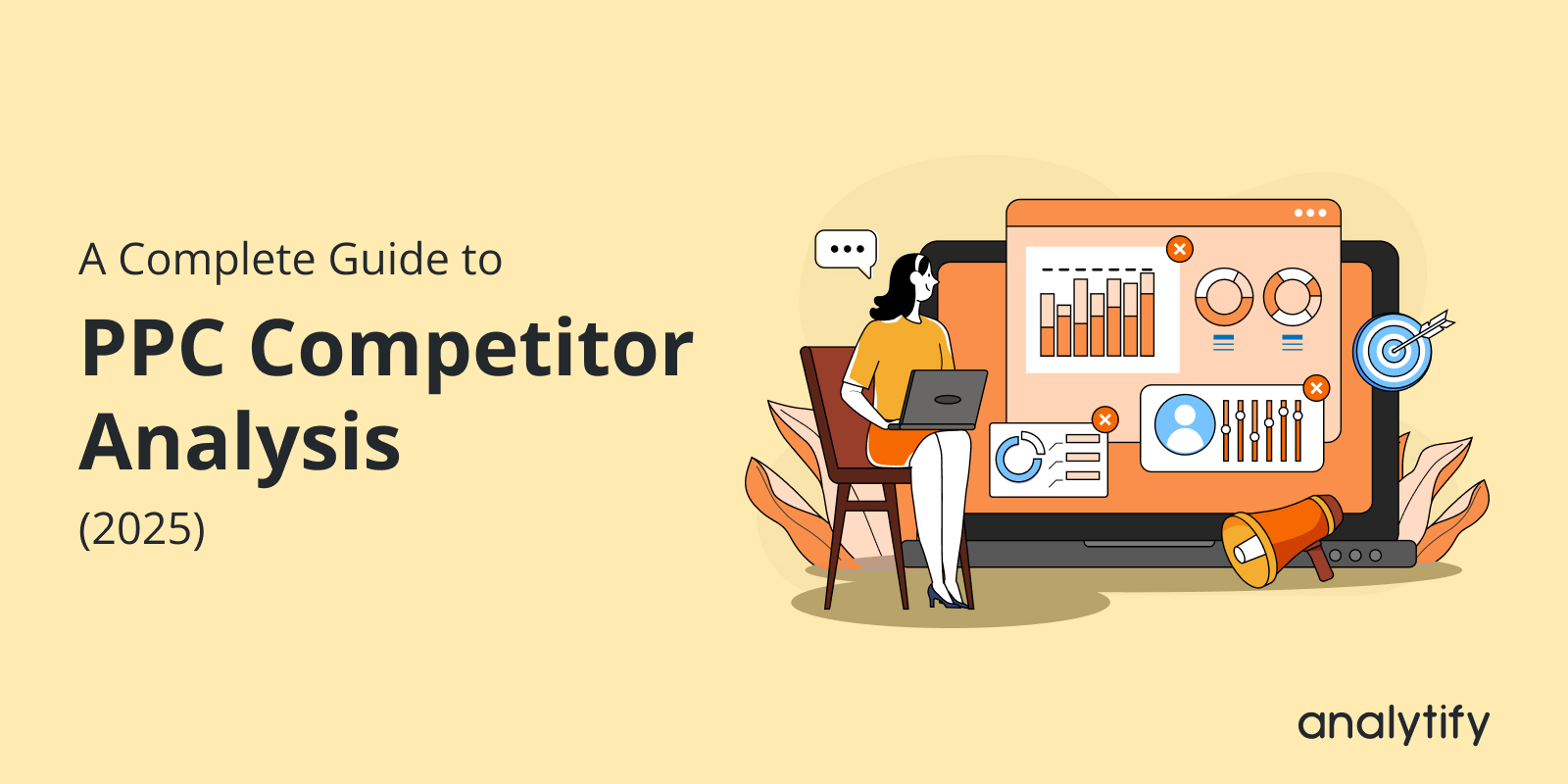
A Complete Guide to PPC Competitor Analysis (2025)
Are you conducting a proper PPC competitor analysis? In the world of digital marketing, staying ahead of your competitors is key to running successful PPC campaigns. By analyzing your competitors’ strategies, you can identify their strengths, discover gaps, and improve your own approach.
In this guide, we’ll explore what PPC competitor analysis is, why it’s important, and how you can use it to refine your campaigns.
Let’s see how to analyze a PPC competitor!
PPC Competitor Analysis (TOC):
What Is PPC Competitor Analysis?
PPC competitor analysis is the process of studying your competitors’ paid ads. It helps you understand their strategies. By looking at their keywords, ads, and landing pages, you can improve your own campaigns.
PPC tracking covers several areas:
- Keyword Targeting: What keywords are they bidding on?
- Ad Copy: What do their ads say? How do they grab attention?
- Bidding Strategies: How much are they willing to pay for each click?
- Landing Pages: What do their landing pages look like? Are they optimized for conversions?
By understanding these elements, you can make smarter decisions for your own PPC campaigns.
Why Is PPC Competitor Analysis Important?
PPC competitor analysis is important for several reasons. Here’s why you should consider it:
- Identify Gaps: By analyzing your competitors, you can uncover missed opportunities. This helps you find areas they are overlooking, which you can capitalize on to gain an edge.
- Optimize Spend: Understanding how much competitors are spending on ads allows you to adjust your own budget. You can allocate your resources more effectively by focusing on high-performing keywords and ads.
- Enhance Performance: By looking at what’s working for your competitors, you can learn from their successes and mistakes. This will help you improve your ad relevance, quality scores, and overall campaign performance.
PPC competitor analysis gives you the insights needed to refine your strategy, reduce wasted spend, and improve your results.
How to Conduct a PPC Competitor Analysis (Step by Step)
Conducting a thorough competitor PPC analysis involves several detailed steps. Each step is necessary to gain insights into your competitors’ PPC strategies and using that information to improve your own campaigns.
PPC competitor analysis examples include identifying your competitor, then analyzing the keywords they use, analyzing their landing pages, and a lot more, which we are going to cover next.
Here’s how you can do it:
Step 1: Identify Your Competitors
Before you can analyze your competitors, you need to first identify them. This can be broken down into two categories:
- Direct Competitors: These are businesses that sell similar products or services and target the same audience as you. Their PPC campaigns will likely overlap with yours, making them a key point of focus.
- Indirect Competitors: These are companies that may not sell the exact same product or service but target similar keywords or demographics. For example, if you sell running shoes, an indirect competitor could be a company that sells athletic apparel.
To identify these competitors, you can:
- Perform a simple Google search for your core keywords and see which businesses show up in the paid search results.
- Use Google Ads Auction Insights, which will show you other advertisers bidding on the same keywords.
- Look at competitors’ websites and social media channels to see where they are driving traffic from.
Step 2: Analyze Competitor Keywords
Once you’ve identified your competitors, it’s time to look at competitor keyword PPC strategy. Analyzing the keywords your competitors are bidding on can help you uncover opportunities and avoid oversaturation in crowded markets.
- Keyword Research: Look at the high-performing keywords that your competitors are targeting. Are they using broad keywords, or do they focus on long-tail keywords that are more specific and less competitive?
- PPC Competitor Analysis Tools to Use:
- SEMrush: This tool offers a detailed look at the keywords your competitors are ranking for and bidding on in paid search.
- Ahrefs: Provides comprehensive keyword analysis, including keyword gaps and insights into which competitors are ranking for certain terms.
- SpyFu: Great for tracking competitors’ paid keyword strategies and ad history.
- SEMrush: This tool offers a detailed look at the keywords your competitors are ranking for and bidding on in paid search.
Identifying Gaps: One of the most valuable aspects of analyzing your competitors’ keywords is spotting gaps. For instance, you may find keywords they are missing or underutilizing. These gaps represent opportunities for you to target less competitive, but still valuable, keywords.
When analyzing keywords, keep an eye out for:
- High-performing keywords: These keywords bring the most traffic to your competitors.
- Underserved terms: Keywords that aren’t widely used but could be beneficial for your business.
Step 3: Evaluate Ad Copy and Creative
Competitors’ ad copy plays a huge role in their PPC success. Understanding how they craft their messaging can provide you with valuable insights for creating your own ads.
- Messaging: What are the main selling points in their ads? What kind of language are they using to engage users? Are they focusing on discounts, unique features, or emotional appeal?
- Call-to-Action (CTA): A compelling CTA can make or break a PPC ad. Are their CTAs clear and strong? Examples include “Shop Now,” “Learn More,” “Get Your Free Trial,” etc. Assess how well their CTAs align with the intent of the user.
- Ad Extensions: Check for the use of ad extensions such as sitelinks, call extensions, or location extensions. These can improve ad visibility and drive higher CTRs (Click-Through Rates).
- Visuals and Formats: Take note of any visual elements in their ads, including images, videos, and graphics. Are they using visuals effectively to attract attention and convey their message?
Step 4: Examine Landing Pages
Landing pages are where the magic happens. They are where your competitors convert their traffic into leads or sales. Analyzing their landing pages can provide actionable insights into what’s working for them.
- Design and Layout: How is the landing page designed? Is it user-friendly? A clean, organized layout with clear navigation increases conversions.
- Content: Does the content align with the ad copy? Are the key selling points emphasized? The content on the landing page should continue the message from the ad, keeping the user’s journey consistent and easy to follow.
- Conversion Elements: Look for forms, buttons, and calls-to-action. Are there clear and easy options for users to complete the desired action (e.g., purchase, sign up, request more information)? A well-designed landing page typically includes:
- Clear CTAs (e.g., “Buy Now,” “Request a Demo”)
- Trust signals like testimonials, reviews, or guarantees
- User-friendly design with fast load times
- Clear CTAs (e.g., “Buy Now,” “Request a Demo”)
- A/B Testing: Check if competitors seem to be testing different landing page versions. A/B testing elements like headlines, CTAs, or imagery can improve conversion rates significantly.
Use tools like Hotjar, or Crazy Egg to see how your competitors’ landing pages are structured and whether they’re testing variations for better results.
Step 5: Monitor Performance Metrics
Analyzing the performance of your competitors’ PPC campaigns is necessary for understanding their effectiveness. Key performance metrics include in PPC competitive analysis:
- Impressions: How often are their ads shown? A high number of impressions means they’re targeting the right audience with broad-reaching ads.
- Clicks: How often are users clicking on their ads? High click-through rates (CTR) indicate that their ads are compelling and well-targeted.
- Cost-Per-Click (CPC): How much are competitors paying per click? This can give you an idea of the competitiveness of a keyword and how aggressive their bidding strategy is.
- Conversion Rates: How well are their landing pages converting visitors? If their conversion rate is high, they’re likely using effective messaging and strong calls to action.
To track these metrics:
- Use Google Ads Auction Insights to compare your performance against competitors.
- SpyFu and SEMrush for insights into competitors’ ad spending, bids, and CPC.
By examining these metrics, you can learn what’s working for your competitors and apply similar strategies to your own campaigns.
Essential Tools for PPC Marketing Competitor Analysis
To conduct a comprehensive PPC competitor analysis, you need the right set of tools. These tools can help you gather data, analyze competitors’ strategies, and uncover opportunities. Below are some of the most valuable tools to help you get the insights you need:
1. SEMrush
SEMrush is one of the most popular tools for PPC competitor analysis. It provides a comprehensive overview of your competitors’ PPC campaigns, including keyword analysis, ad copy insights, and bidding strategies.
- Key Features:
- Keyword Research: See what keywords your competitors are bidding on.
- Ad Copy: View your competitors’ ad copy and creative to understand their messaging.
- Competitor Analysis: Track the performance of your competitors’ ads and compare your campaigns to theirs.
- Keyword Research: See what keywords your competitors are bidding on.
Why Use SEMrush: It’s a powerful tool for detailed analysis, allowing you to discover profitable keywords and track ad performance over time.
2. Ahrefs
Ahrefs is best known for its backlink analysis, but it’s also a strong tool for PPC competitor research, especially when it comes to identifying keyword gaps.
- Key Features:
- Keyword Gap Analysis: Find keywords that your competitors are targeting that you’re not.
- Ad Performance: Track competitor ad performance and identify keywords with the best potential.
- Backlink Analysis: Analyze the backlinks that lead to your competitors’ landing pages.
- Keyword Gap Analysis: Find keywords that your competitors are targeting that you’re not.
Why Use Ahrefs: It’s great for uncovering hidden keyword opportunities and tracking the competitive landscape.
3. SimilarWeb
SimilarWeb offers insights into competitor websites, giving you a broader view of their online marketing efforts, including PPC strategies.
- Key Features:
- Traffic Sources: Understand where your competitors’ traffic is coming from, including paid search.
- Audience Demographics: See who is visiting your competitors’ websites and their behavior patterns.
- PPC Campaign Performance: Analyze your competitors’ paid search ads and their effectiveness.
- Traffic Sources: Understand where your competitors’ traffic is coming from, including paid search.
Why Use SimilarWeb: It’s a great tool for understanding your competitors’ entire online presence, not just their PPC strategies.
How to Use These Tools Together
Each of these tools offers unique insights, and using them together can provide a complete picture of your competitors’ PPC strategies.
- Start with Keyword Research: Use SEMrush or Ahrefs to identify the high-performing keywords your competitors are bidding on.
- Track Ad Performance: Use SpyFu or Google Ads Auction Insights to understand how well your competitors’ ads are performing and where you stand.
- Look for Gaps: Use SimilarWeb and Ahrefs to uncover keyword gaps and hidden opportunities in your competitors’ PPC campaigns.
- Monitor Landing Pages: Tools like SEMrush and Ubersuggest can give you insights into the landing pages that are driving conversions for your competitors.
By combining these tools, you can gain a holistic view of your competitors’ strategies and refine your own campaigns for improved performance.
How Analytify Enhances PPC Analysis
Join 50,000+ beginners & professionals who use Analytify to simplify their Google Analytics!
While Analytify doesn’t directly track competitors’ PPC activities, it is an essential tool for analyzing and optimizing your own PPC campaigns. Here’s how Analytify can help you improve your PPC performance and make data-driven decisions based on your campaigns:
Seamless Integration with Google Ads and Google Analytics
Analytify integrates directly with Google Ads and Google Analytics, allowing you to streamline your data and analyze it in one place. By combining these powerful platforms, you gain a comprehensive view of your PPC performance, making it easier to track and optimize your ad campaigns. You can monitor key metrics like impressions, clicks, CTR (click-through rate), conversions, and ROI (return on investment) in real-time, allowing for swift adjustments and informed decision-making.
PPC Campaign Tracking and Metrics
While competitor analysis is important, focusing on the metrics that matter most to your own campaigns is just as crucial. Analytify allows you to track vital PPC metrics, such as:
- Cost per Click (CPC)
- Click-Through Rate (CTR)
- Conversion Rate
- Cost per Acquisition (CPA)
- Return on Ad Spend (ROAS)
By monitoring these metrics, you can identify which ads are generating the most value and which ones need optimization. With this actionable data at hand, you can enhance your campaigns’ performance and get the best return on your ad spend.
Customizable Dashboards for Tailored Analysis
Analytify’s customizable dashboards provide a personalized experience, so you can focus on the data that matters most. You can filter your data by specific timeframes, campaigns, or ad groups to uncover trends and gain deeper insights into the performance of your ads. These dashboards allow you to easily visualize and analyze your PPC performance, offering the flexibility to adjust and improve your strategy as you go.
Enhanced Campaign Segmentation
Understanding which audience segments perform best is key to PPC success. Analytify enables you to segment your PPC campaign data by device type, location, demographics, and more. This segmentation lets you tailor your bids and ad targeting to high-performing audiences, ensuring your PPC budget is being used in the most effective way possible.
Detailed Reports and Automated Insights
Analytify simplifies the reporting process by automatically generating detailed reports that offer actionable insights into your PPC campaigns. These reports highlight key metrics, trends, and performance comparisons, helping you pinpoint areas that need improvement. With the ability to track your progress over time, you can better understand the impact of your campaigns and adjust your strategies accordingly.
Cost and Revenue Analysis
By understanding the relationship between ad spend and revenue, you can evaluate the effectiveness of your PPC campaigns. Analytify allows you to calculate your return on investment (ROI) and analyze which campaigns are providing the best cost-to-revenue ratio. This data is vital for making informed decisions on future spending and optimizing your PPC strategy.
Common Mistakes to Avoid in PPC Competitor Analysis
While conducting PPC competitor analysis, it’s important to avoid some common mistakes that could lead to inaccurate conclusions or wasted efforts. Here are the key pitfalls to watch out for:
1. Overlooking Indirect Competitors
Focusing only on direct competitors (businesses offering the same products or services) can limit your analysis. Indirect competitors might target similar audiences or keywords, even if they don’t offer the same products. These competitors can provide valuable insights into different PPC strategies, so don’t ignore them.
2. Ignoring Mobile Optimization
In today’s world, mobile traffic makes up a significant portion of online searches. Mobile optimization is crucial for PPC success. If your competitors’ ads or landing pages aren’t optimized for mobile users, it could give you an edge. Always check how your competitors’ ads and landing pages perform on mobile devices.
3. Not Updating Regularly
The digital landscape is constantly evolving. Competitors change their strategies, and new trends emerge. If you don’t regularly update your competitor analysis, you risk missing out on new opportunities or shifts in the market. Set up a routine to check your competitors’ PPC strategies at regular intervals.
4. Overreliance on Tools
Tools like SEMrush, SpyFu, and Google Ads Auction Insights provide valuable data, but they shouldn’t be your only source of information. Balance tool data with your own insights. For example, you should manually check the ad copy and landing pages to see how your competitors’ campaigns are performing in real-time.
5. Focusing Too Much on CPC
While Cost-Per-Click (CPC) is an important metric, it’s not the only one. A competitor might have a high CPC, but if their conversion rate is low, their PPC campaign isn’t as efficient as it seems. Always consider conversion data alongside CPC to get a clearer picture of your competitors’ campaign effectiveness.
6. Not Considering the Full Customer Journey
It’s easy to focus solely on the click—who’s clicking your competitors’ ads and how much they’re paying. But the full customer journey involves more than just a click. Be sure to analyze how your competitors’ ads align with their landing pages and whether their customer journey is optimized for conversions. Understanding the post-click experience is just as important as the pre-click analysis.
By avoiding these common mistakes, you can ensure that your PPC competitor analysis is more effective and accurate. Regularly updating your insights, analyzing both direct and indirect competitors, and considering the full customer journey will help you make better decisions and improve your PPC campaigns.
Frequently Asked Questions About PPC Competitor Analysis
1. What is PPC Competitor Analysis?
PPC competitor analysis involves studying your competitors’ paid advertising strategies, such as their keywords, ad copy, bidding strategies, and landing pages. By understanding what works for them, you can optimize your own campaigns for better performance.
2. Why is PPC Competitor Analysis important?
It’s crucial because it helps you identify opportunities, optimize your budget, and learn from your competitors’ successes and mistakes. By understanding their strategies, you can improve your own campaigns and achieve better ROI.
3. What tools are best for PPC Competitor Analysis?
Tools like SEMrush, SpyFu, Ahrefs, Google Ads Auction Insights, and SimilarWeb are great for gathering competitor data on keywords, ad copy, and performance. Each tool provides unique insights that can help you optimize your PPC campaigns.
4. How often should I conduct a PPC Competitor Analysis?
It’s a good practice to conduct PPC competitor analysis regularly, ideally every 1–3 months. This ensures you stay updated on any changes in your competitors’ strategies and keep your campaigns aligned with the latest trends.
5. Can I use PPC Competitor Analysis for my SEO campaigns as well?
Yes! Many of the insights from PPC competitor analysis can be applied to SEO strategies. For instance, understanding which keywords competitors are targeting can inform your SEO keyword research. Additionally, analyzing landing pages and user experience can help improve your own site’s SEO.
6. How do I use PPC competitor data in my campaigns?
Use the insights from your PPC competitor analysis to:
Target new or less competitive keywords.
Adjust your bids to be more competitive.
Improve your ad copy and landing page designs.
Optimize your budget allocation by focusing on high-performing keywords and ads.
PPC Competitor Analysis: Final Thoughts
Competitor PPC research is an important component of any effective digital marketing strategy. By understanding what your competitors are doing and continuously refining your approach, you can optimize your PPC campaigns for better performance and higher returns.
Remember to use the right tools, regularly analyze your competitors’ strategies, and avoid common mistakes.
We hope, with this guide, you’ll be well-equipped to stay ahead of the competition and make data-driven decisions that boost your PPC success.
You may also like to read:
Now, we’d love to hear about your strategies for PPC competitor analysis.

